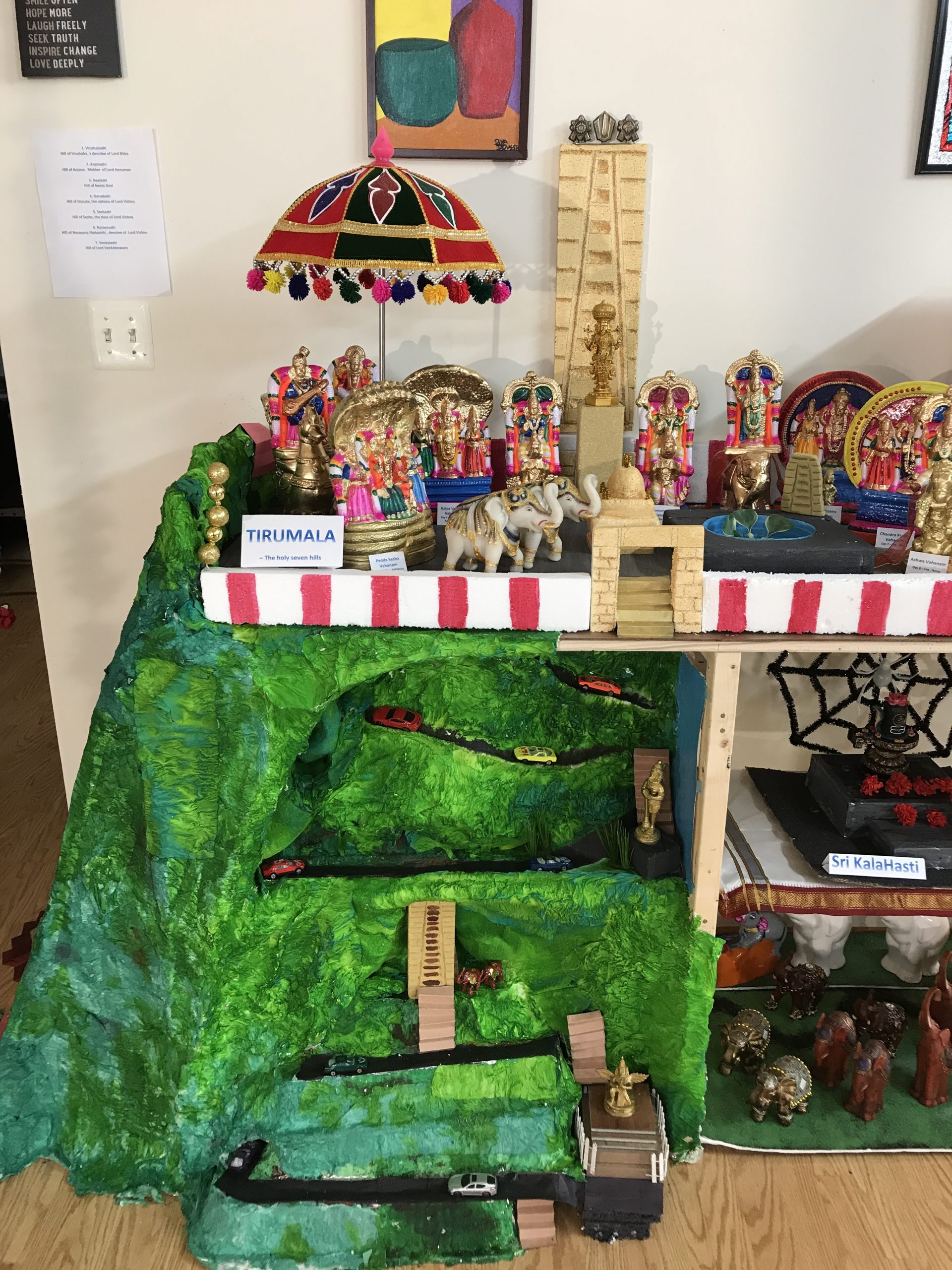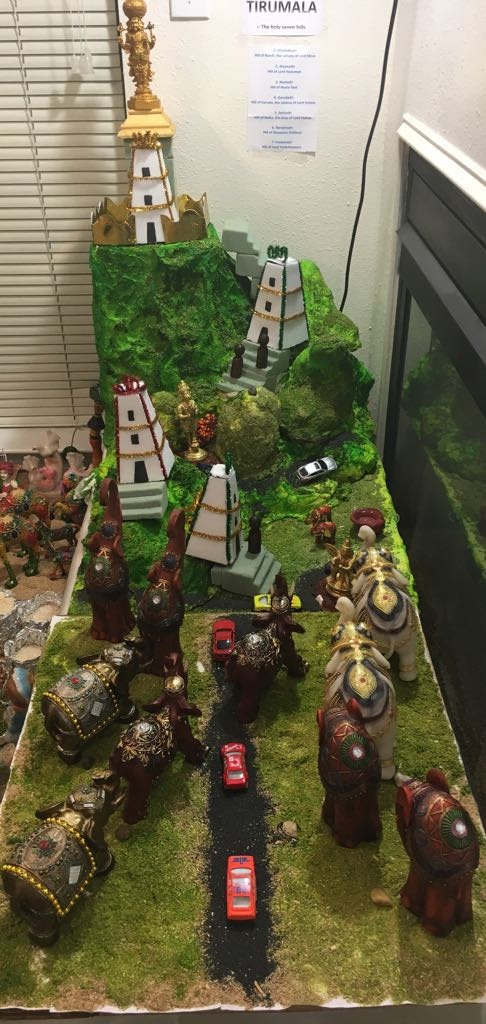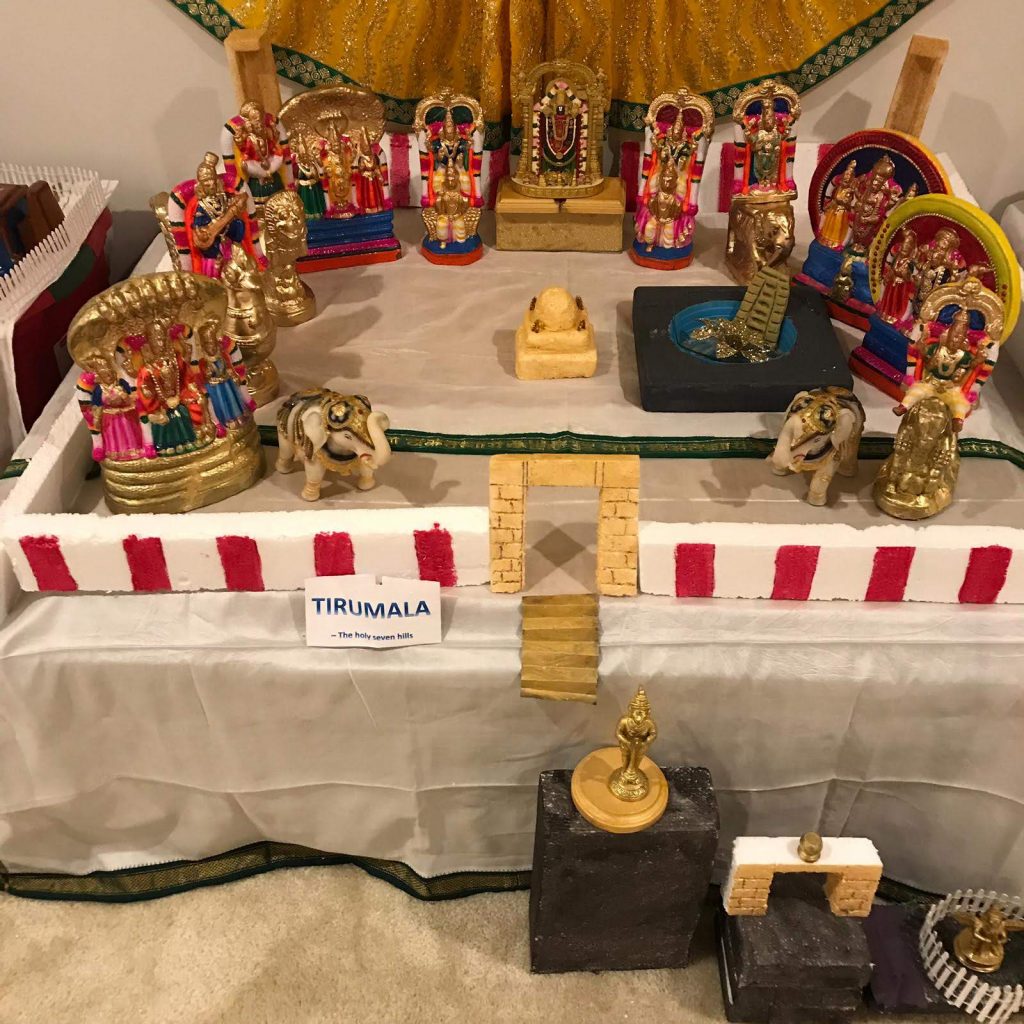Sthala puranas
Temples of India
Indian subcontinent has innumerous temples and each of them have a history associated with them. There could be mythological occurrence, Historical importance or even legends associated with a temple. Vernacular South Indian texts or oral traditions share the traditional stories of particular localities, villages, and temples. Sthala-purana is also loosely defined as “legendary history.”
Sthala Puranas not only enables us to have an insight into history but also enrich our knowledge of local culture and local customs. In many cases if they are read together in a connected manner they tend to provide more light on the history than even the 18 major Puranas and Upapuranas.
We have selected a few temples and have depicted the stories related to them.
Sri Kalahasti
Story of Srikalahasteeswara
Srikalahasti is a small town in Chittoor district of Andhra Pradesh and is amongst the most sacred pilgrim centres. Its temple enshrines a Vayu-Linga, one of Shiva’s Pancha-Bhoota Lingas, the others being manifest at Arunachala (Agni-linga), Kanchi (Prithvi-linga), Chidambaram (Akasa-linga) and Thiruvanaikaval (Jala-linga).
The Shivalinga at Sri Kalahasti is marked by symbols of three creatures — that of a spider at the bottom, a five-hooded snake on top and elephant-tusks on either side. Legend informs us that Sri (spider), Kala (snake) and Hasti (elephant) were cursed by Brahma, Shiva and Parvati but attained moksha by worshipping Lord Shiva here. Hence Shiva came to be called Sri Kalahasteeswara. The temple also has a statue of the hunter Thinnan who offered his own kannu (eyes) to this Shivalinga and gained renown as Bhakta Kannappa
In Kritayuga, which is considered to be the first of the four Yugas of the Hindu religion, the spider has got to have salvation, while the snake and the elephant who were the devotees of Lord Shiva in the Trata Yugaam got salvation that era. It is believed that the devotional expression of the elephant was a troubling thing for the devotional display of the serpent and vice-versa and so, the two got into extreme animosity with each other. And it ended only with Shiva liberating the two of them.
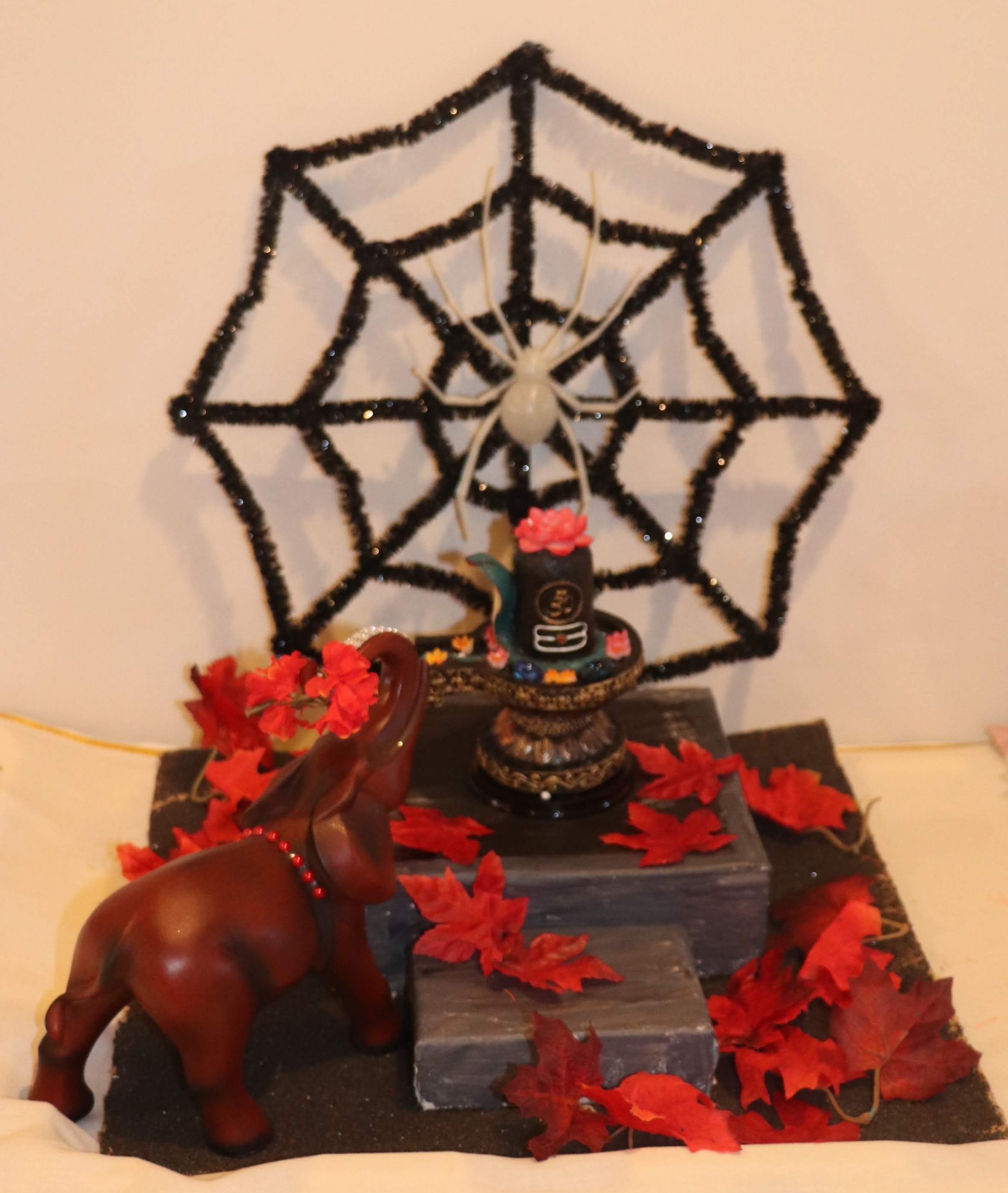
Thiruchengodu
Story of Ardhanareswara
Thiruchengode is a city and municipality located in Namakkal District, in the southern Indian state of Tamil Nadu. The famous Ardhanareeswarar hill temple (one of the 64 manifestations of Lord Shiva, representing the unity of Shiva and Parvati) is situated in Tiruchengode. In ancient days, Tiruchengode was known as Thirukodimaadachenkundrur. It was also known as Thiruchengottankudi Nageswaram. The red color of the hill provided the name “Chengode”, “Chen” refers to Red in Tamil.
Once upon a time, there lived Bhringi a great sage who is a very great devotee of Lord Shiva. He only worshipped Lord Shiva neglecting Devi Parvathi. Noticed this, next time when he started praying lord, Parvathi devi sat very close to Lord. On seeing this, Bhringi took the form of bee and circumambulated lord alone.
Enraged by the act of Bhringi, Devi cursed him to lose all his Shakthi or to lose all parts that came from mother. According to tantras the tough parts that is bones and nerves from father and soft parts such as flesh, blood comes from mother. As per the curse he lost all his flesh and blood from his body and became a skeleton.
Bhringi was not able to stand erect. On pity, Lord Shiva blessed him with third leg. This angered Parvathi devi and she left Kailash, came to Earth and as per Sage Gauthama’s advice, performed severe austerities and penance towards lord to attain equality.
Pleased by the prayers Lord Shiva, blessed Devi Parvati to reside in his left side. All creatures bowed before Ardhnareeshwara. (Ardh – half, nari – female, ishwara – shiva) . On this form they taught Sage Bhringi that both male and female are equal quoting “there’s no shiva without shakthi, there’s no shakthi without shiva.” . But Sage Bhringi was denied from his lost flesh and blood. And the austerity observed by Devi Parvathi is named “Kedara Gouri Vratha” and Lord Shiva blessed that whoever observe this fast, their families will be united and love between couples will increase and they will united stay forever.
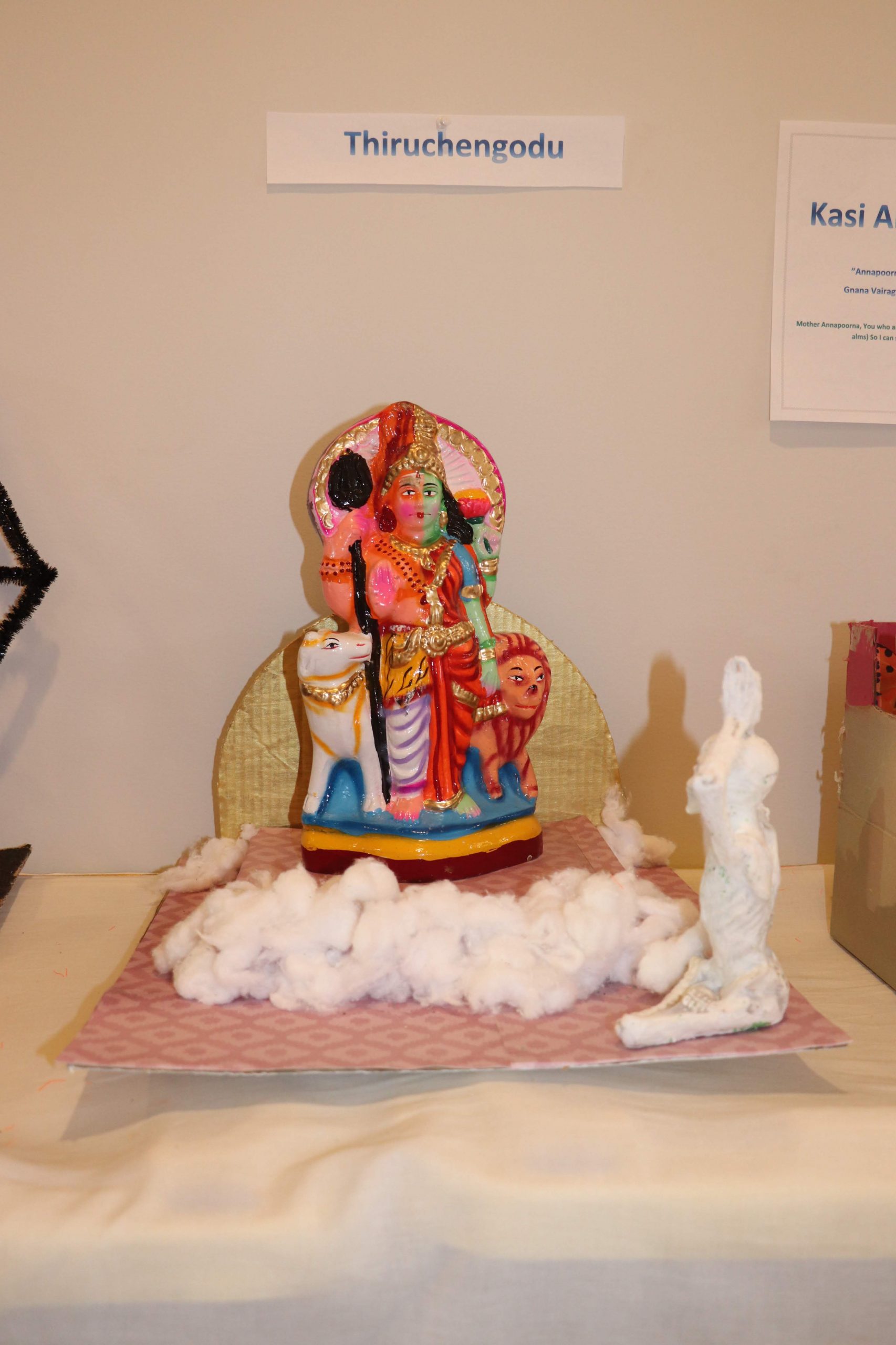
Puri
Story of Jaganatha
In Satya yuga there was a king named Indradyumna. He was a very powerful king, and was very devoted to Vishnu. He once decided that he would worship Vishnu at a tirtha, a sacred place of pilgrimage.
Indradyumna scanned all the existing tirthas and cities. But none of them satisfied him. None of them, he felt, was appropriate as a place for worshiping Vishnu. Indradyumna was not satisfied with any of the temples in his kingdom and wanted to build another temple to Vishnu. He left his kingdom in search of a proper place along with his soldiers and subjects. After travelling long, they arrived on the shores of the southern ocean known as lavana samudra.
There were so many waves in the ocean that the ocean itself seemed to be dancing. Marine animals lived in the ocean and the waters were also the source of all sorts of jewels. Indradyumna began to live on the shores of the ocean. He discovered a place near the ocean that was thick with flower and fruit trees. Many types of birds gathered there to eat the fruit. This was the place known as Purushottama kshetra , the city of Puri of modern times.
Purushottama kshetra was a very important tirtha. But all knowledge of this tirtha had been hidden until Indradyumna arrived on the scene. There was a reason for this. Many years ago, there used to be an image of Vishnu there, where people used to pray. So sacred was the image that all the sins of the worshippers were immediately forgiven. The result was that Yama could not punish any of the sinners. They simply prayed to Vishnu’s image and escaped. Yama therefore prayed to Vishnu for a solution. Vishnu hid the image under the sand so that no one knew that it existed.
Indradyumna liked Purushottama kshetra. The river Mahanadi or Chitroplala flowed not very far away. The people who lived around the place were religious. He decided that this was the right place for building a temple to Vishnu. On an auspicious day, the foundation stone was laid.
Indradyumna then got in touch with the kings of Kalinga, Utkala and Koshala. He requested their help in fetching stones for the building of the temple. The kings sent their architects to the Vindhya mountains. The stones were gathered from these mountains and brought to Purushottama Kshetra in boats and chariots. Messengers were also sent to several other kings for aid. They came with their armies and with a lot of wealth and helped in building the temple. After the temple was built, there remained the more important question of the image. Indradyumna began to pray to Vishnu for guidance.
Vishnu appeared before Indradyumna in a dream and said, Why are you so miserable? When the sun rises, got to the shores of the ocean. There you will find a tree. Half of the tree is in the water and the remaining half in the sand. Chop down this tree. Its wood will give you the material for the image.
In the morning, Indradyumna went to the seashore and found the tree. It was just as Vishnu had described it to be. With an axe, he chopped down the tree. As he was about to slice the trunk in two, two brahmanas appeared before him. Although Indradyumna did not know it, these two brahmanas were Vishnu and Vishvakarma in disguise. King, what have you done? exclaimed the brahmanas. You have cut down the only tree that was on the shores of the ocean.
Forgive me, replied Indradyumna. I wished to make an image of Vishnu. Vishnu has instructed me in a dream that this is the tree from which the image should be made.
That is an excellent idea, said the brahmana who was Vishnu in disguise. There is nothing so holy as praying to Vishnu. Meet my companion. He is as skilled as the great Vishvakarma himself. If you want, he will build the image for you.
King Indradyumna agreed. And instructed by Vishnu, Vishvakarma started to build the image. Or, to be more accurate, there were three diffferent images. The first one was that of Baladeva or Balarama. This was completely while in colour, except for the eyes, which were red. The image was dressed in blue and snake held its hood over Balarama’s head. A club and a mace were in Balarama’s hands. The second image was Krishna’s This was blue in colour, with eyes like lotus flowers. The image was dressed in yellow and had a chakra inits hand. The third image was that of Krishna’s sister Subhadra. This image was golden in colour and was dressed in wonderful clothes.
When Indradyumna discovered that the images were made in a matter of minutes, he was thundersturck. He realized that the two brhamanas could not be mere mortals. He fell at their feet and said, Please tell me who you are. You cannot be humans.
Vishnu and Vishvakarma then revealed their true selves and Indradyumna was thrilled. Vishnu blessed the king and told him that he would rule for ten thousand and nine hundred years. And even after Indradyumna died, a place would be reserved for him in heaven.
On an auspicious day, the three images were instated in the temple.
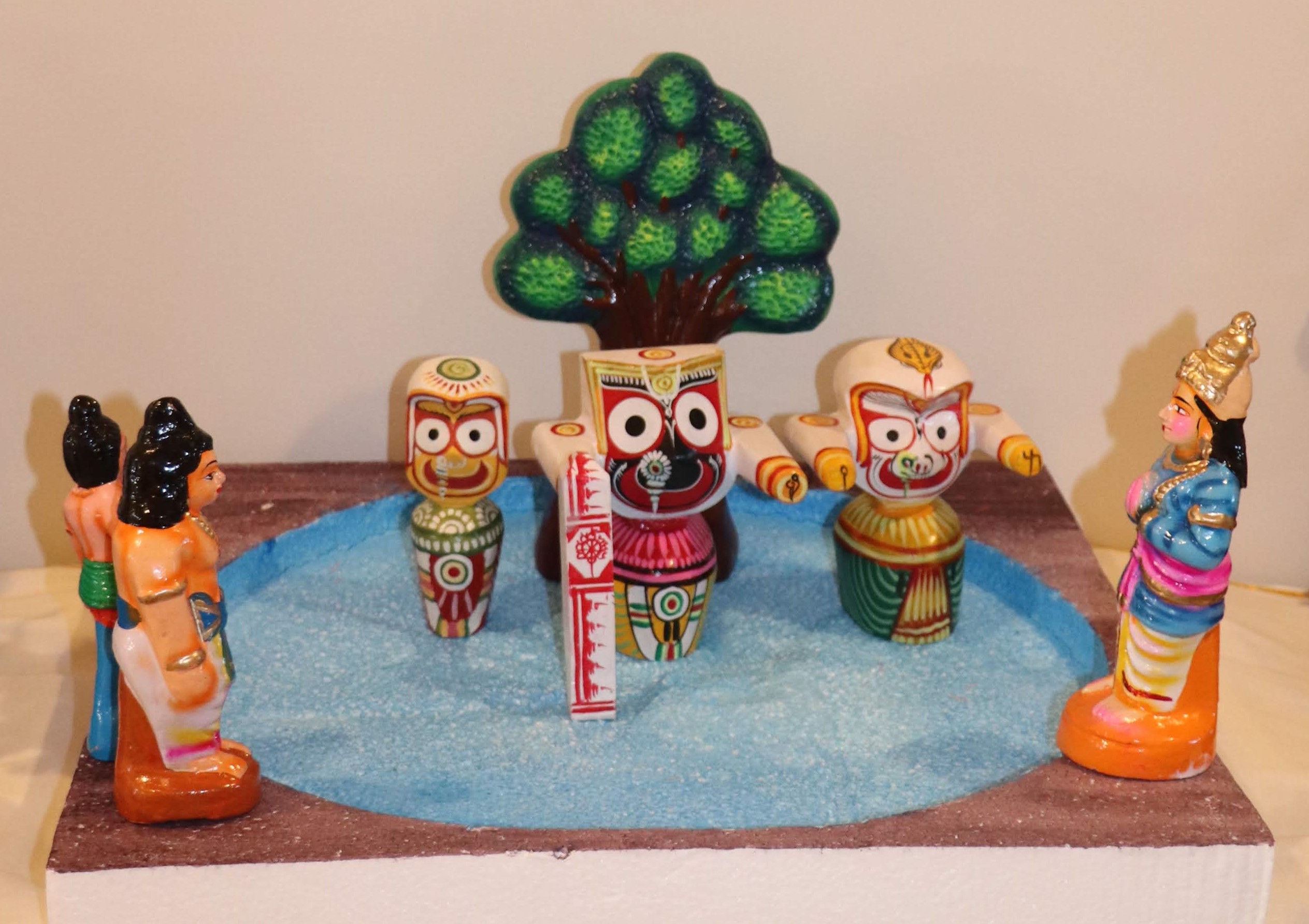
Varanasi / Kasi
Story of Annapoorneswari
Lord Shiva and Goddess Parvati used to play the game of dice. Once they were playing and the game became very interesting. They started betting. and Shiva lost everything that he had to Parvati. Shiva felt very humiliated and went to Deodar forest to meet Lord Vishnu. Lord Vishnu then told Shiva to play the game again. He told him that he will win back everything he had lost in the next game. Shiva took Lord Vishnu’s advice and went back to play the game again.
Goddess Parvati became suspicious of Shiva’s sudden turn of fortunes that led him to win back everything. This led to an argument between the two of them. Finally, Lord Vishnu appeared as he could not take the fight anymore. He told them that the dice in the game had moved according to his wish and they were only under an illusion that they had been playing.
To this Shiva added that everything materialistic was just an illusion or Maya. Everything that we possessed was an illusion. Even the food we ate was Maya. This made Goddess Parvati angry. She did not agree that food was an illusion. She said that calling food an illusion was equivalent to calling her an illusion. So in order to show Lord Shiva and the world her importance she disappeared saying that she wanted to see how the world would survive without food.
Shiva realized his mistake and the fact that he was incomplete without Shakti. So he appeared before Goddess Parvati in Kashi with a begging bowl in his hands. He said her that he had realized his mistake that food could not be dismissed as an illusion and it was required to nourish the body as well as the inner soul. Since then Goddess Parvati is worshipped as the Goddess of food – Annapurna Devi. It is believed that if the food is cooked with a spirit of holiness it becomes sacred as Annapurna blesses it.
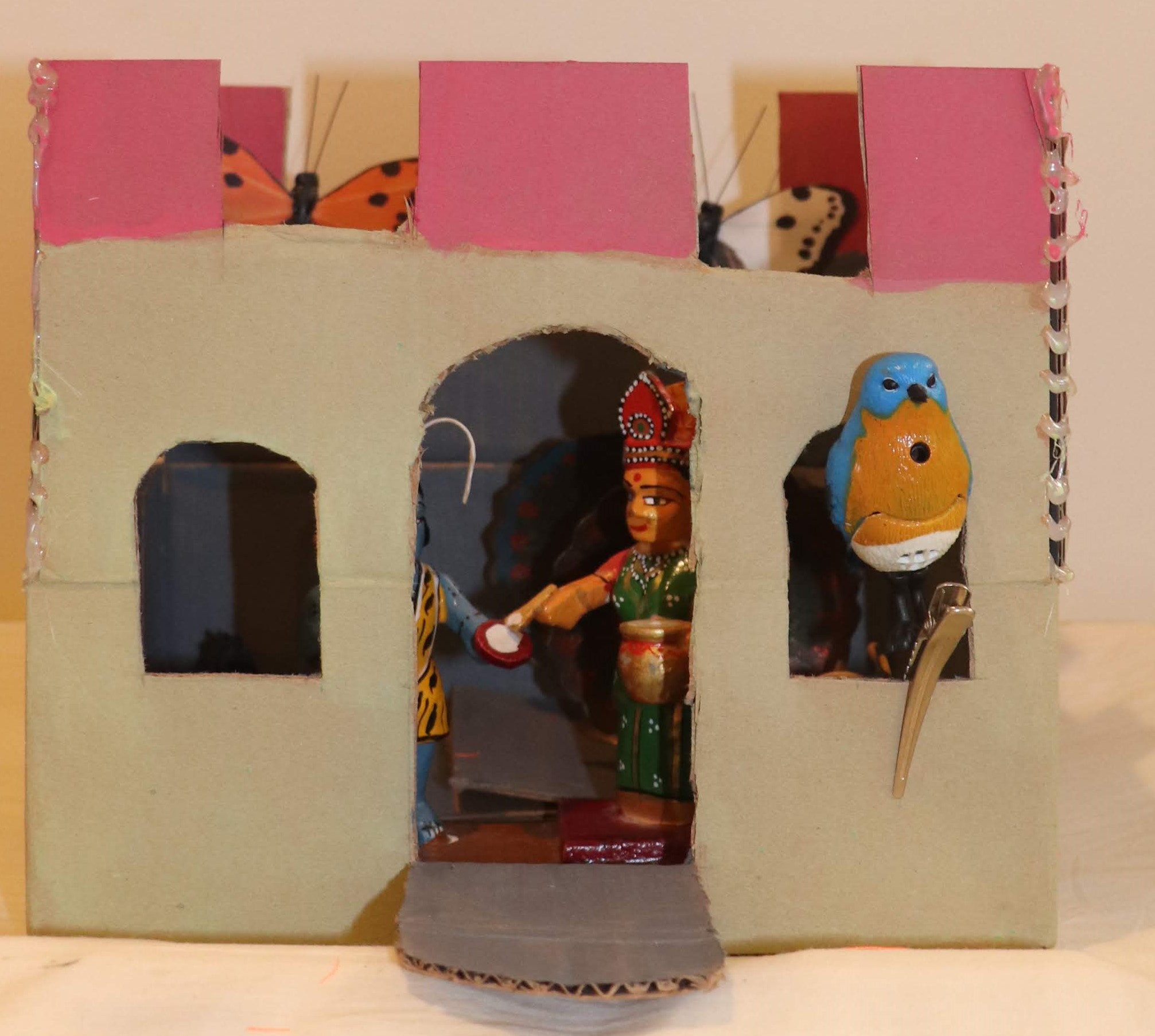
Sabarimala
Story of Ayyappa
Sabarimala in Kerala, is the site of the most famous Ayyappa temple in the world and is visited by millions of devotees each year.The temple is situated in the middle of a dense forest, and the devotees need to take a 41 or a 48 day penance, carry irumudi and ascended 18 steps to seek the blessings of the Lord. Lord Ayyappa is Harihara Putra , the son of Lord Shiva and Lord Vishnu(in Mohini form). The reason for his avatar was to anhilate Mahishi , a demoness who was terrorizing the earth and was undefeatable due to her boon. Lord Ayyappa was handed over to King Rajasekara pandian of the Pandalam dynasty when he was a baby and He grew up as Manikanda , the crown price of Pandala.
After many situations Manikanda was able to kill Mahishi. The death of Mahishi was celebrated by everyone and a saint appeared before the King Rajasekara to reveal the real identity of Lord Ayyappa. The king begged Ayyappa to stay in his kingdom forever and Ayyappa agreed to the wish of the king . The Lord pointed an arrow and shot it, asked the king to build a temple for him where it landed. The arrow fell on Sabarimala or the Mountain of Sabari. A temple was built at the place where they found the arrow, and it is believed that Lord Ayyappa stays in the temple showering blessings on the devotees who came to visit him through the tough trekking path barefooted.
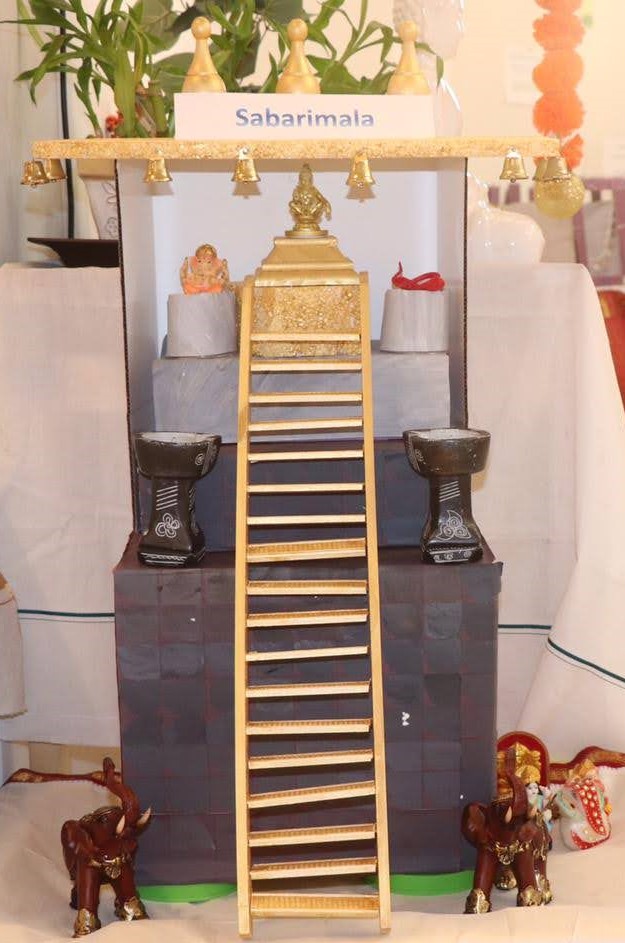
Sri Varadaraja Perumal
Story of Athivaradar
Sri Varadaraja Perumal temple is in Kanchipuram , Tamilnadu. Varadaraja means King who bestows boons . As per ‘Hasti Giri Mahatyam’ , The statue of Varadaraja Perumal was made by Brahma , also known as Brahma Kararchita Varadaja moorthies , carved out of Athi Tree by Vishwakarma in Kritha Yuga
Originally worshiped by Lord Brahma in Satya-yuga, by Gajendra in Treta-yuga, by Sage Brihaspathi in Dwapara-yuga and by Ananta Shesha in Kali-yuga.
While Brahma worshiped the Deity alone, Lord Vishnu said Brahma,”You are worshiping Me constantly. You should also give an opportunity to others for worship as well”.
To this Lord Brahma agreed to allow the Lord’s worship only for a few nano seconds. Similarly, when Gajendra and Brihaspathi were worshiping, they allowed the worship during their period only for a few minutes on Lord Vishnu’s request.
In the similar manner, when Ananta Shesha worships, he allows the worship to be offered by others for 48 days once in 40 years. After this period of 1 mandala, the Lord is immersed back in the Ananta Sarovar to be worshiped by Ananta Shesha for next 40 years. Ananta Sarovar is the sannidhanam of Lord Anantashesh
Historically , Muslim invasions also caused the idol to be immersed in the temple tank, information which was available only with two brothers , after the brothers passed away. The statue was nowhere to be found.They got new statue from Pazhaya seevarm and installed as Vardaraja Perumal
In 1699 due to famine the water in the temple tank dried off and the villagers were able to find the statue , since then every 40 years they bring the statue out and pray for one mandala (48 days) and then the statue is immersed into the temple tank for Adisesha to continue his prayers. Athivaradar is kept in a secret room under water on a bed of a idol of five headed snake
Legend of the lizards
According to the legend there were two disciples of Gowtham Maharishi who used to fill water in pot for worshiping the deity regularly. One day lizard fell in the pot filled with water which the disciples without noticing gave it to Maharishi which angered him. He cursed them to become lizard. Later Maharishi advised them to go to Kanchipuram and stay there for long time as lizards. When Lord Indra was cursed by Goddess Saraswathi to become Elephant, he in the form of Elephant prayed to Lord Varadaraja Swamy and got freed from curse. The two lizards also received salvation at the same time.
Varadharaja Perumal Temple has carvings of a golden sun face along with one big golden lizard and a sliver moon face with small lizard carvings on the roof. It is believed that after having dharsanam of Varadharaja Swamy while going out of the sanctum one should touch these Lizard craving along with sun and moon on roof which will cure all the dhoshas and chronic diseases.
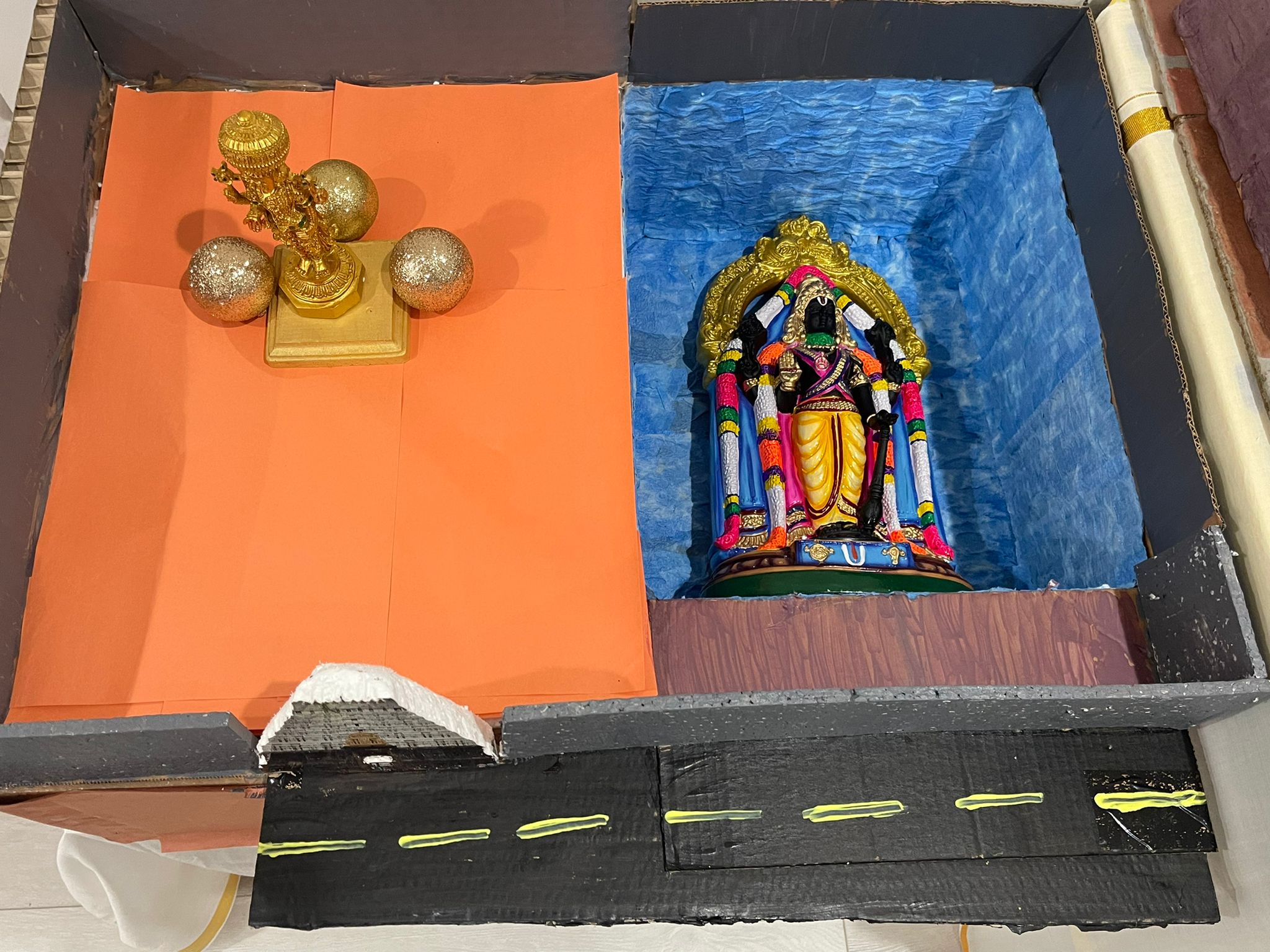
Saravana Poigai
Birth of Lord Karthikeya
Once the gods of the heaven had to suffer miseries in the hands of demons called Taraka and Surapadma. They prayed for years to Lord Shiva to intervene in the matter and save them. Finally the Lord’s mercy gave way and he decided to give rise to a new manifestation of his power to kill the demons. From Lord Shiva’s eyes came out six sparks. Since they were too hot to be borne by any other element in the creation, the task was given to Agni to carry them forward.
Even Agni could not bear the heat of the sparks and therefore left them in a lake called Saravana. In the lake, the six sparks took form as six divine children. The exquisite charm of the children made Shiva and Parvati so happy and they asked the six Karthika sisters to take care of the babies. Sine the children was reared by Karthika sisters, later the name Karthikeya ensued.
Lord Shiva and Parvati came to the lake and Parvati embraced all the six children together and as a result they got one single body with six heads. This is the reason why Karthikeya is also called Shanmuka (six faced Lord).
The place of Karthikeya’s birth is called Saravana Poigai , the location of this is unknown.
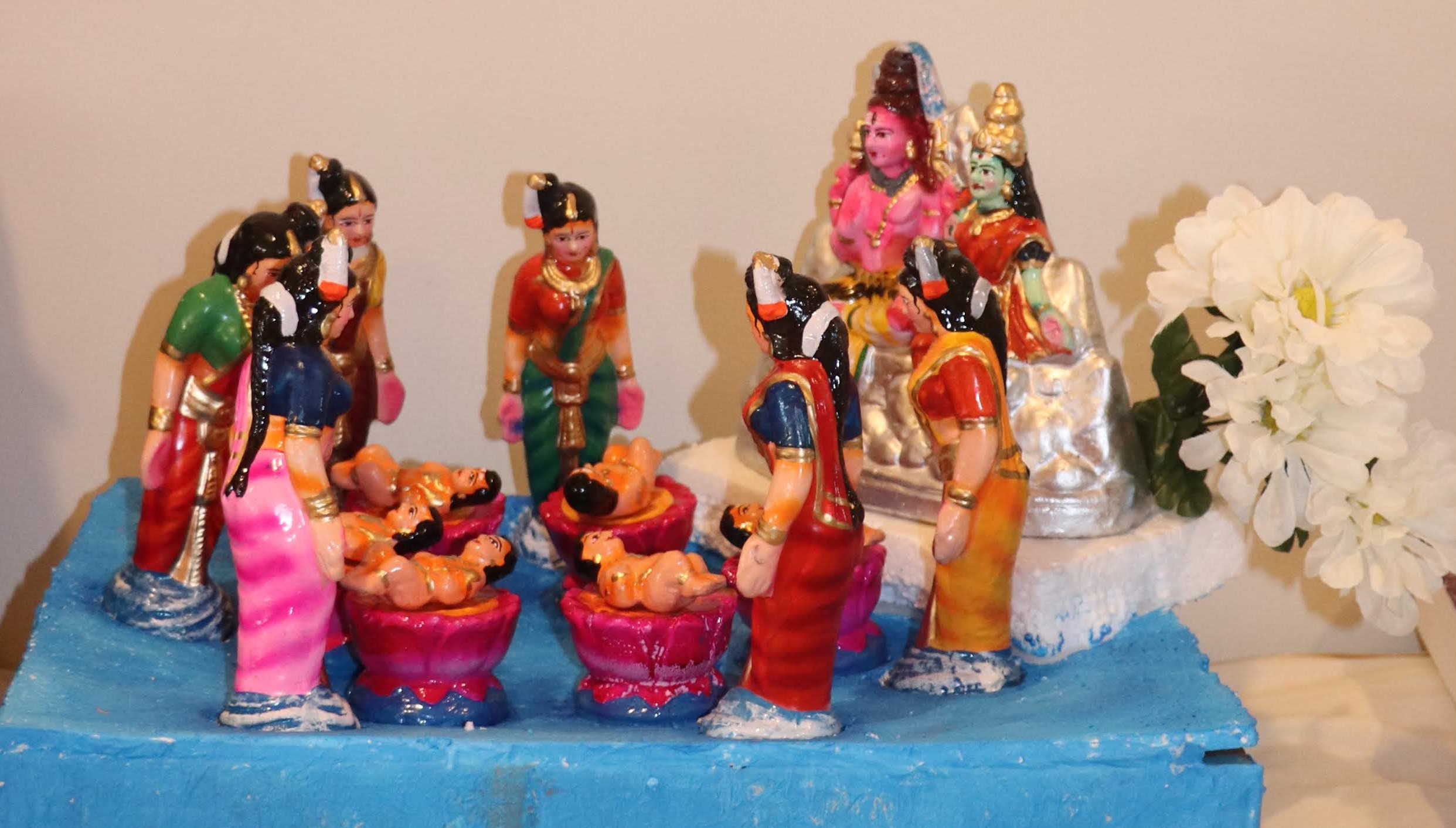
Tirumala
The abode of Sri Venkateswara
Sri Venkateswara Temple is a landmark Vaishnavite temple situated in the hill town of Tirumala at Tirupati in Chittoor district of Andhra Pradesh, India. The Temple is dedicated to Lord Sri Venkateswara, an incarnation of Vishnu, who is believed to have appeared here to save mankind from trials and troubles of Kali Yuga. Hence the place has also got the name Kaliyuga Vaikuntham and Lord here is referred to as Kaliyuga Prathyaksha Daivam. The temple is also known by other names like Tirumala Temple, Tirupati Temple, Tirupati Balaji Temple. Lord Venkateswara is known by many other names: Balaji, Govinda, and Srinivasa.
Tirumala Hills are part of Seshachalam Hills range. The hills are 853 metres (2,799 ft) above sea level. The Hills comprises seven peaks, representing the seven heads of Adisesha. The temple lies on the seventh peak -Venkatadri, on the southern banks of Sri Swami Pushkarini, a holy water tank. Hence the temple is also referred to as “Temple of Seven Hills”
Holy Seven Hills:
Hill | Details |
Vrushabadri | Hill of Vrushaba, a devotee of Lord Shiva |
Anjanadri | Hill of Anjana , Mother of Lord Hanuman |
Neeladri | Hill of Neela Devi |
Garudadri | Hill of Garuda, the vahana of Lord Vishnu |
Seshadri | Hill of Sesha, the dasa of Lord Vishnu |
Naraynadri | Hill of Narayana Maharishi , devotee of Lord Vishnu |
Venkatadri | Hill of Lord Venkateswara |
Deities:
Deity | Details |
Moolavirat or Dhruva Beram | Main stone deity of Lord Venkateswara . In Telugu, beram means “deity” and dhruva means “pole star” or “fixed”). About 8 feet (2.4 m) from the toes to the top of the crown. |
Kautuka Beram or Bhoga Srinivasa | This is a small one-foot (0.3 m) silver deity which was given to the temple in 614 AD by Pallava Queen Samavai alias Kadavai Perundevi, wife of Pallava chief Sakti Vikatan. Has never been removed from the temple since the day it was installed. It enjoys all the Bhoga (worldly pleasures) which the loving devotees want to offer the lord. Often swayed on a silver swing or cradle, sleeps in a golden cot every night, and receives Sahasra Kalashabishekam every Wednesday among other things. Always placed near the left foot of Moolavirat and is always connected to the main deity by a holy Sambandha Kroocha. Always faced at an angle of 45 degrees towards the devotees, because it holds a Prayoga Chakra (“ready to strike” discus). |
Snapana Beram or Ugra Srinivasa | Represents the fearsome aspect of Lord Venkateswara. Remains inside the sanctum sanctorum, and comes out on only one day each year: on Kaishika Dwadasi, before the sunrise. Snapana means “cleansing,” and the deity received abhishekam daily with holy waters, milk, curds, ghee, sandalwood paste, turmeric, and so on. These daily rituals not only show the affection of devotees for the lord but also help to cool the fearsome aspect of the Lord. Originally, this beram used to be brought out in processions through the town frequently, but later it was replaced by the newly consecrated Utsava Beram, |
Utsava Beram or Malayappa swami | Image of the Lord which is brought out and taken in procession through the town for time to time. Also called Malayappa, and is always flanked by the berams of Sridevi and Bhudevi, the two consorts of the lord. These three berams were found in a cave called “Malayappan Konai” in the holy Tirumala Hills. Jewels worth crores of rupees have been donated as offerings to these deities. |
Bali Beram or Koluvu Srinivasa | Panchaloha deity, which means it is made from an alloy of five metals. Resembles the main deity very closely, and represents the presiding officer for all activities and rituals in the temple. The deity is also called Bali Beram. Regarded as the guardian deity of the temple that presides over its financial and economic affairs. Daily offerings are made to the deity, with a presentation of accounts. Every year during July i.e. according to Hindu calendar “Dakshinaya Sankaramana” the temple celebrates Anivar Asthanam which is the end of the fiscal year. |
Puja
The temple follows “Vaikhanasa Agama” tradition of worship, which is believed to be revealed by Sage Vikhanasa and is propagated by his disciples Atri, Bhrigu, Marichi, Kasyapa. Vaikhanasa is one of the principal traditions of Hinduism and primarily worships Vishnu (and his associated Avatars) as the Supreme God. This ancient texts recommends six times puja(worship) a day for Vishnu, of which minimum one puja is mandatory.
| Puja | Details |
| Prathyusham puja | worship should start and finish before sunrise |
| Prathakala puja | worship should start after sunrise and finish before noon |
| Madhyahna puja | worship should start and finish at noon |
| Aparahana puja | worship should start when the sun starts to descend |
| SandhyaKala puja | worship should start and finish around the sunset |
| Nisi puja | worship should start after the horizon is completely dark |
At present only three pujas are performed in Tirumala Temple daily which includes UshaKala puja, Madhyahna puja, Nisi puja. All the Aradhana is done by hereditary Vaikhanasa priests, who have performed the services for generations.
